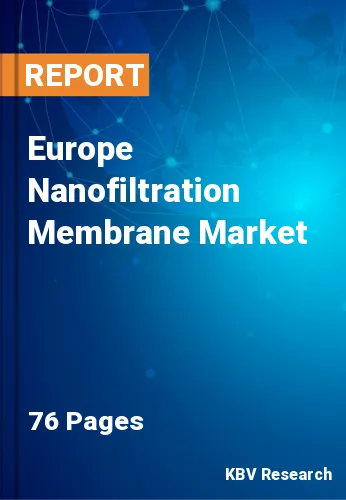The Europe Nanofiltration Membrane Market would witness market growth of 4.9% CAGR during the forecast period (2019-2025).
Nanofiltration has a very positive advantage in being able to process big quantities and generate product streams continually. Nanofiltration, however, is the least-used technique of membrane filtration in the sector as the dimensions of membrane pores are restricted to just a few nanometers. Anything smaller, inverse osmosis is used for ultrafiltration and anything bigger is used. Ultrafiltration can be used, as it is more conventional, in cases where nanofiltration can be used. As with all membrane filter technology, a major disadvantage connected with nanotechnology is the cost and maintenance of the membranes used.
The main benefits of nanofiltration for softening water is that during the calcium and magnesium ions replacing process while passing smaller hydrated monovalent ions, filtration is performed without adding extra sodium ions. Several separation processes cannot be processed at room temperature (e.g. distillation), this greatly pushes the cost of the process when constant heating or cooling can be applied.
Based on Product Type, the market is segmented into Polymeric, Inorganic and Hybrid. Based on Application, the market is segmented into Water & Wastewater Treatment, Food and Beverages, Chemical & Petrochemicals, Pharmaceutical & Biomedical and Others. Based on countries, the market is segmented into Germany, UK, France, Russia, Spain, Italy, and Rest of Europe.
The market research report covers the analysis of key stake holders of the market. Key companies profiled in the report include Applied Membranes, Inc., Argonide Corporation, Synder Filtration, Inc., Linde PLC, Merck Group, SPX Flow, Inc., Alfa Laval AB, Siemens AG, GEA Group AG, and Danaher Corporation.
Market Segmentation:
By Product Type
By Application
By Country
Companies Profiled
Our team of dedicated experts can provide you with attractive expansion opportunities for your business.

